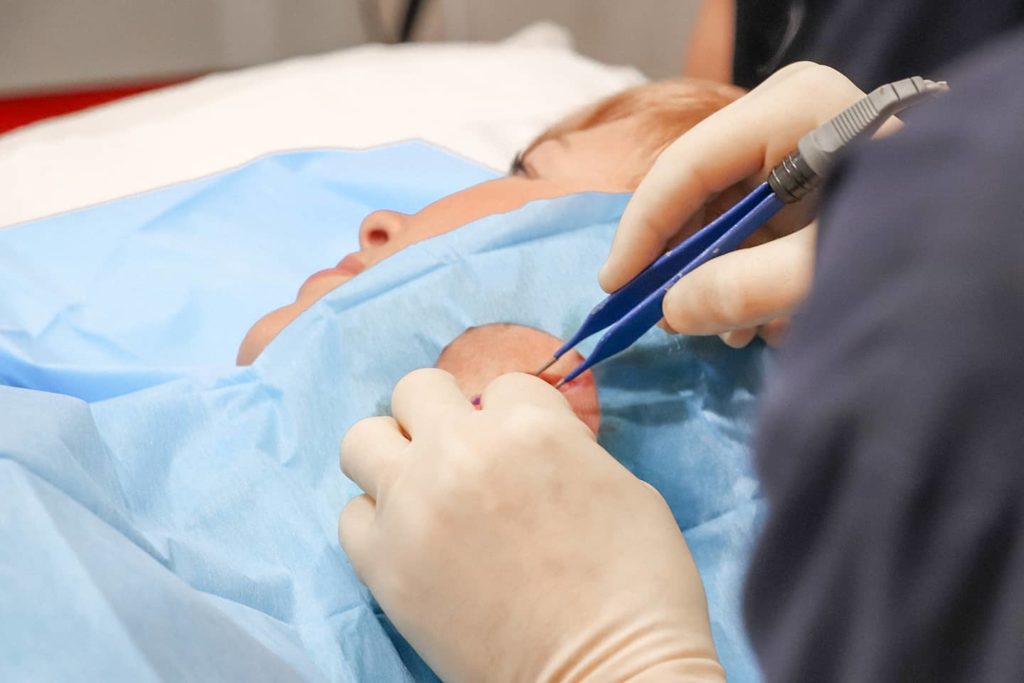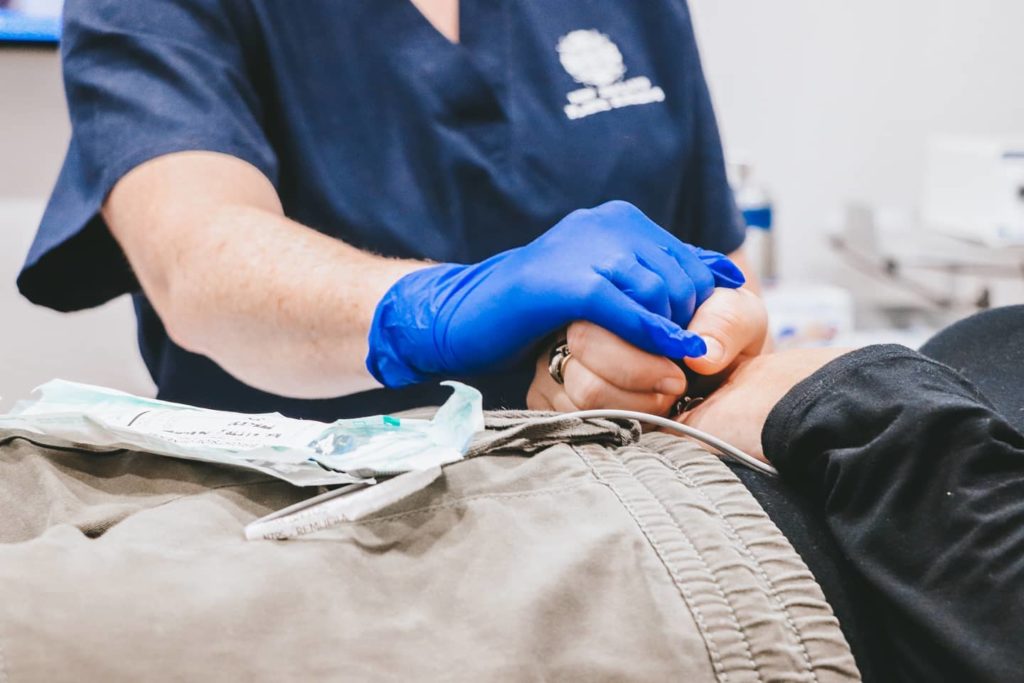Mole Removal by Mr Mark Gittos in London United Kingdom
Moles, skin tags and warts are extremely common and can be removed using minor surgery. Do you want to remove a certain type of moles or other skin concerns that you are unhappy about?
Mr Mark Gittos is a Specialist Plastic Surgeon in London, United Kingdom and has years of experience removing Moles, skin lumps & bumps.,
Not everyone loves a mole or small bump on their face.
Moles are extremely common small bumps or areas of skin where the colour has changed. They can occur on any part of the skin and although most moles are brownish they can also be flesh coloured, blue, or black. They shouldn’t worry you as they are almost always benign and everyone has them.
So what’s the problem? Well, when they are in a high profile area like your face, or a potentially embarrassing one, such as your breast they can eat away at your self-assurance. They can cause you to feel less confident in public, shy and self-conscious.
Are there any solutions for removing a mole or bump? Surgical Skin Procedures are a fairly straightforward procedure which can easily remove the problem mole or cyst and bring back your confidence.
Find out more or contact us to find out more.
Is it a Skin Cancer or just a Mole?
Your mole may be warning signs of skin cancer if it shows the following characteristics:
- It is asymmetric
- It has Borders that are uneven or notched
- It has color variations (more than one color, or red, white, or blue)
- Its diameter is larger than a pencil tip eraser
- It is evolving in size, shape, color, elevation, or is causing itching, and bleeding
- Appears after the age of 21
- An open sore that doesn’t heal within three weeks
If your mole shows any of these signs you should immediately seek consultation from a specialist plastic surgeon and get it removed.
Are all moles cancerous?
Not all moles are cancerous. There are two types of moles: Benign and Atypical moles. Benign are well-defined symmetrical shapes and are only single-colored remain constant over time and such moles are harmless. But some atypical moles that are unnatural in shape and size that show the following characteristics can be considered as malignant:
- Itches
- Bleeds
- Swells
- Is painful
- Shows changes in color, size, shape, texture, or elevation
- Appeared after the age of 21
- An open sore that doesn’t heal within three weeks
Different Types of Moles
Melanocytes are cells of the skin that produce melanin, a pigment required for skin color. A mole, also known as a nevus, is the growth of melanocytes in clusters on the outer layer of the skin. These are usually considered as blemishes on the skin. They can appear alone or in groups, can appear on the face or any part of the body. They can be of different sizes and are usually dark brown or black in color. These can be round or oval in shape with some of these being flat and some raised. Most moles are usually harmless but can be potentially cancerous if they start showing changes in their shape or color, or start to irritate your skin. There are two types of moles:
Benign mole
- A benign mole or a seborrheic mole has a well-defined shape and does not exhibit multiple colors. Benign moles can be flat or raised in appearance and remain constant in shape and size. These moles are not innately dangerous.
Atypical mole
- Atypical moles are oddly shaped moles that exhibit irregular features under the microscope. The exact cause for an atypical mole is still unknown; it is thought that atypical moles appear due to genetic and environmental factors and show tendencies of turning malignant. All atypical moles are not malignant, but having an atypical mole is a risk factor for developing melanoma (skin cancer).
Mole Surgery Options
Moles can be surgically removed by Excision biopsy, Punch biopsy or Shaving
- Excision biopsy: Excision biopsy is performed to cut out the entire mole. A small amount of local anesthetic will be applied around the mole, which is then cut out along with nearby surrounding tissue. The incision will be closed with the help of a couple of stitches, leaving a small scar, which will fade with time. The stitches will be removed after a fortnight.
- Punch biopsy: Punch biopsy removes the entire mole but is less invasive than excision biopsy and the procedure can only be performed on smaller moles. A small amount of local anesthetic will be applied around the mole and a special tool will be used to remove the mole from the target area. As the diameter of a mole is quite small, often no stitches are required leaving little to no scar after the procedure. But the skin will seem like it has been pierced by a sharp object.
- Shaving: The procedure is frequently used to remove moles raised above the surface of the skin. Local anesthetic in a small amount will be applied around the mole. The mole will then be shaved down using a special instrument or a scalpel removing only the top layer of the mole through this technique. The depth of the incision will vary depending on the circumstances. This procedure doesn’t require any stitches hence is associated with minimal or no scarring.
Are you suitable for Mole Removal?
You are an ideal candidate for mole removal if:
- Your mole is cancerous or has the potential to become malignant in the future
- You want to remove the mole for cosmetic reason
- Your mole is affecting your confidence
- The mole interferes with shaving or combing hair
- Your clothing rubs on the mole, leading to discomfort and irritation
Benefits of Mole Removal Surgery
- You can regain your confidence
- Gives you a pleasing and aesthetic look
- Long-term health benefits including prevention of malignant transformation of the mole.
Your Surgical Mole Removal Journey
- Consultation with Mr Mark Gittos – Mole Surgery Expert
Consultation forms the first phase of your surgical mole removal journey. After a physical examination of the mole, if your doctor suspects that a mole may be cancerous, a tissue sample for microscopic examination or biopsy will be taken. Depending on the result of the biopsy, your mole will be classified as either benign or cancerous.
Diagnosis can also be performed through the following methods:
- Dermascope Spot Check: Through the help of a dermascope the mole is enlarged so that a mole can be checked on a detailed basis.
- Full Body Mole Map: Pictures of your body are taken recording the accurate locations and features of each mole. In the following test, pictures from the previous mole map are compared as a reference for pointing out developments and changes in the moles.
- Skin Cancer Check: Every inch of your skin will be inspected, examining at all moles or other lesions for indications of skin cancer. Suspicious moles will be photographed during the session for more detailed analysis.
- The Mole Removal procedure
This is the second phase of your surgical mole removal journey. There are three possible surgical procedures for mole removal:Excision biopsy, Punch biopsy and Shaving
Your procedure can be carried out at the clinic and will take 20 to 60 minutes – you are effectively an outpatient.
All tissue is sent off for analysis just to make sure there are no abnormal cells, and then tiny, discreet stitches will be carefully inserted by Mr Gittos.
- Recovery after Mole Surgery
The speed of recovery varies from person to person depending mostly on your health and your body’s healing process. Recovery from surgical mole removal is usually very rapid. The swelling even from the excision biopsy disappears after a few days. It is essential to keep the operated area clean to avoid infection and staying out of direct sunlight is also necessary to aid the healing process and to avoid scarring. It is advised not to stretch the site of the procedure, as it may cause bleeding and increase the size of the scar.There will be a very small scar, but this will fade over time.
A dressing will be applied to the incision site and should be changed every one to two days until it is clean and dry. Stitches that are applied during excision biopsy will be removed only after two weeks.
Risks and Complications of Mole Removal
Every surgical procedure poses a certain amount of risks, and you must understand these risks and possible complications associated with them before deciding if the surgery is right for you.
You will be thoroughly briefed about the possible complications before undergoing the procedure to ensure that you fully understand the potential risks associated. The risks and complication associated with surgical mole removal include:
- Bleeding
- Bruising
- Infection
- Scarring
- Nerve damage due to incomplete removal of the mole
Celebrities who are thought to have had Mole removal surgery
Celebrities constantly undergo cosmetic procedures to improve their appearances in the world of showbiz. Many celebrities have undergone mole removal surgeries to enhance the way they look or to prevent its potential malignant transformation
Some celebrities who went under the knife to get their mole removed include:
- Enrique Iglesias: The famous Spanish singer and songwriter had his trademark mole removed following concerns that it could turn malignant. Though he was nervous about the procedure, the surgery was completed within five minutes.
- Tamra Judge: US television star Tamra Judge underwent mole removal surgery to remove melanoma (malignant growth of mole) from her but cheek, which started as a mole initially.
- Witney Carson: American professional dancer Witney Carson had a mole removed surgically from her foot following biopsy reports confirming it to be a malignant melanoma.
Do you love your mole or Do you want it removed?
Cindy Crawford is known for her mole, and she doesn’t want rid of it either. In an interview with a fashion magazine Cindy recalls one of the worst cover campaigns in her past. “The one that makes me cringe the most is British Vogue. The first time they put me on the cover, they airbrushed off my mole,” says the supermodel. “Whenever they mess with the mole, I cringe!”
Somehow, Cindy’s mole is sexy – but she’s lucky – not everyone is happy with their moles. They can be devastating to self-confidence and often the idea of wearing a bikini or making a public appearance can be off-putting.
Mole Removal FAQs – Frequently Asked Questions about Mole Removal
Does it hurt to get a mole removed?
- It won’t hurt when removing a mole surgically as local anesthesia will be applied at the site, you shouldn’t be feeling any pain during the procedure. Post-surgery you could feel discomfort in the incision site for a few days.
How long does it take for a mole removal to heal?
- You can expect complete recovery from mole removal within a few days after the surgical removal procedure.
Do moles grow back?
- It is possible that moles can regrow from the initial site, but it is highly unlikely. A mole can be removed through surgical or non-surgical methods and the outcomes from both procedures are relatively long-lasting.
Do moles grow with age?
- Benign moles do not grow with age. But if your mole is growing with age you should immediately seek professional help as it can be malignant making you prone to melanoma skin cancer.
On which parts of the body do moles appear?
- Moles can appear anywhere on your body, on the face, under the armpits, even between toes nails, and fingertips.
Should I remove a mole myself?
- No, you should not remove a mole yourself as it is quite dangerous as it can cause bleeding and infection. Apart from this, if the mole was malignant then it can increase the risk of you having melanoma skin cancer. You should always seek professional help in such cases.
Will surgical mole removal leave a scar?
Scarring is an inevitable part of any surgical process. Scarring in case of surgical mole removal through punch biopsy and shaving is minimal, while the excision biopsy will leave a small scar due to the application of stitches to close the incision site. The size of the scar will depend upon:
- Your age
- The method of surgery
- The location and size of the mole
Does my insurance cover me for mole removal?
Most insurance companies do not cover surgery done for purely cosmetic reasons without any medical indications, however, if the mole in your body is changing in size, shape, and its color or it becomes itchy, painful and affects your day to day activities your insurance company may cover you for the surgery depending on your insurance.
What are the different methods of mole removal?
There are both surgical methods and non-surgical methods for mole removal. They include:
- Surgical methods
-
- Excision biopsy
- Punch biopsy
- Shaving
- Non-surgical methods
- Radio Frequency (RF) surgery
- Cryotherapy
How can I reduce scarring post-surgery?
Post-surgery scarring can be reduced by
- Avoiding the sun
- Keeping the surgical site clean and moist
- Lightly massaging the scar
- Prevent overstretching the scar
Can I shower after mole removal?
- If you have a dressing applied on the incision site, it is best not to shower as it hampers the healing process. If the mole is removed through punch biopsy or shaving you can shower after completion of the procedure.
How much does it cost to have a mole removed?
- The cost of a mole excision surgery will depend on the method of removal used. please contact the clinic for an estimate or quote.
What kind of doctor removes moles?
- Moles are usually removed by dermatologists or plastic surgeons.
Is mole removal worth it?
- Mole removal could be worth it as moles that are cancerous or potentially-cancerous are removed and this can also result in increased self-confidence, as moles can make a person feel self-conscious depending on their location.
Further Reading – Medical References
- Mole Removal | Mole Removal Methods | Mole Check Clinic
- Health.com on 13 Celebrities Who Have Had Skin Cancer
- Skin Physicians & Surgeons on Holy Moley! (Mole Removal)
- Cosmetic Mole Removal | SkinSmart
- The Skin Cancer Foundation on DIY Don’ts: Why At-Home Mole Removal Is a Bad Idea
Who is Dr. Mark Gittos?
Dr. Mark Gittos is a leading Cosmetic Plastic Surgeon based in London, United Kingdom with years of experience in Mole Removal. He is a specialist plastic surgeon with recognition in the UK and Europe. He is a pioneer in the field of Plastic surgery and has contributed to the growth and expertise of other surgeons working in the field of plastic and cosmetic surgery. He uses advanced techniques to provide the most natural-looking results for breast, body, and skin surgeries.
About Mr Mark Gittos FRACS (Plast) – London Plastic Surgeons
Practice locations in London & Essex, UK and Auckland, New Zealand.
Mr Mark Gittos offers high quality, natural-looking cosmetic surgery results and is highly experienced in Breast, Body and Face Surgery having performed over 4000 Surgeries in the last 26 years.
With world-wide expertise Mr Gittos is an expert in breast, face and body surgery for men & women.
Mr Mark Gittos is a leading Specialist Plastic Surgeon and operates a practice in London UK and Auckland New Zealand. His practice focuses on both surgical and non-surgical procedures, each designed to help restore, improve or change a physical characteristic or problem. The first step in every case is to talk through your personal requirements and explore all the options, before deciding on the most effective solution.
Naturally, before any treatment is begun, we will explain clearly the advantages and risk factors; so that you have the information you need to make an informed decision that is best for you. Visit the practice to find out more.

NEXT STEPS
Do your Research
- Read the Website and Blogs relevant to your procedure
- Browse our Frequently Asked Questions including how to choose a Surgeon for your procedure
- Download the Guides to Surgery
What to Bring to your Plastic Surgeon Consultation
- Bring a friend or relative to help discuss the information and your choices
- Take lots of notes and read the documents provided thoroughly
- Want more information before scheduling your consultation?
Book your Initial Surgery Consultation
- A Referral from your GP or specialist is helpful but NOT essential – you can have a consultation without a GP Referral
- Email us or Call in London on 07557 858156 to arrange your surgeon consultation appointment.
- Secure your consultation with Mr Gittos by paying the Consultation Fee in advance
- A consultation with Dr Gittos is £195.
Please contact us to arrange to book a consultation or to speak with our Patient Care Advisor.
Send an enquiry form today or UK phone 07557 858156 during Clinic Hours


